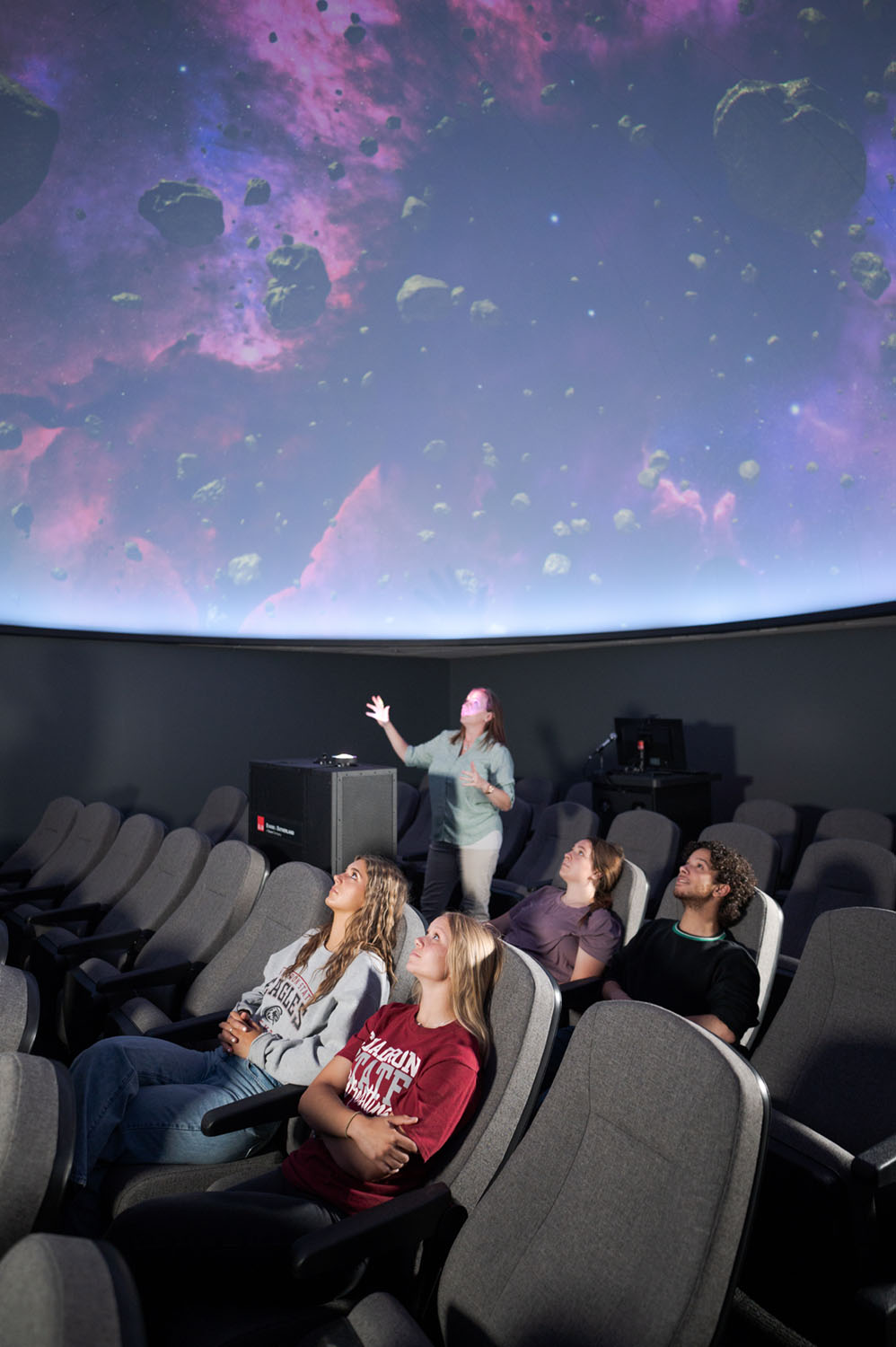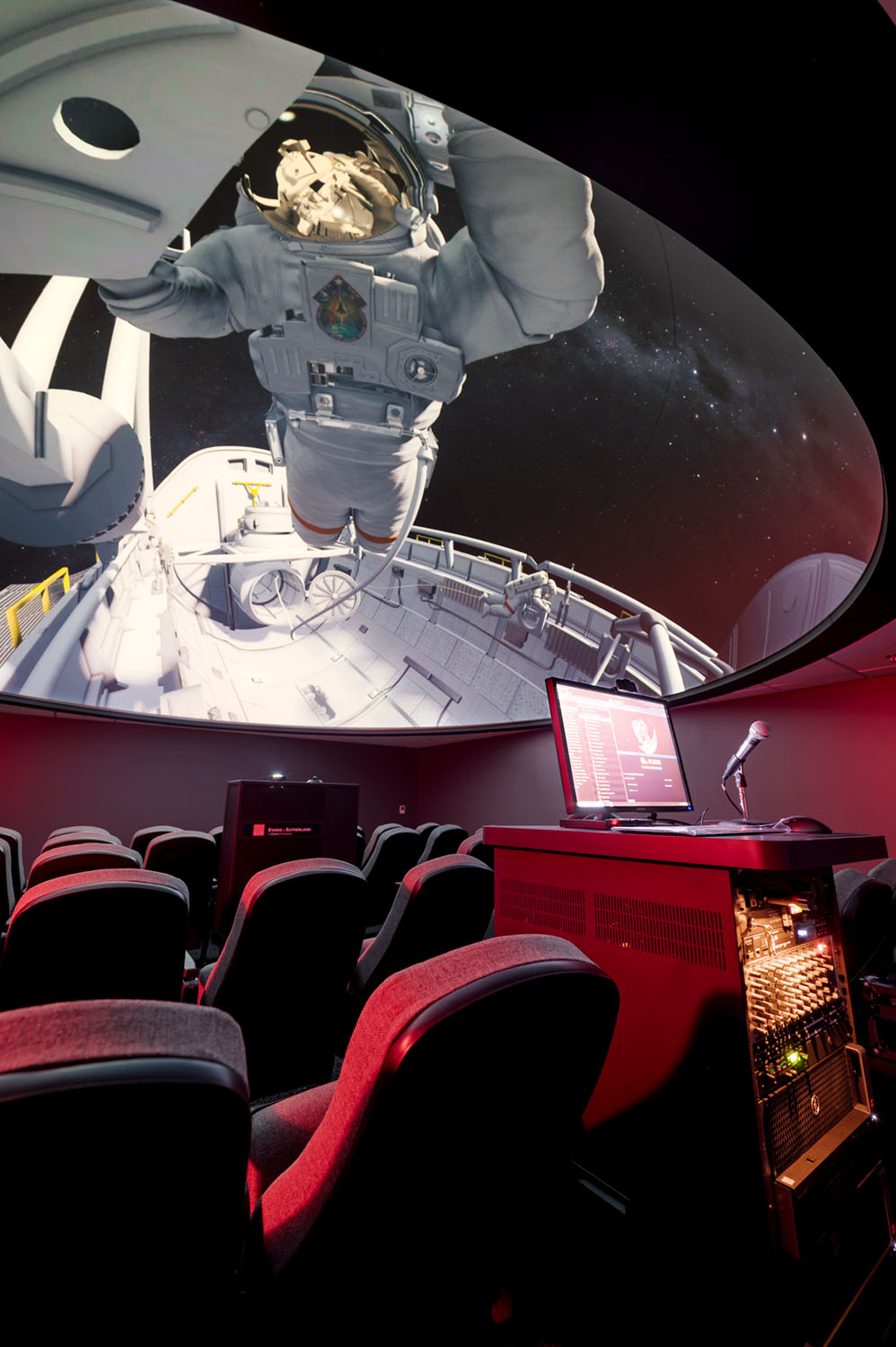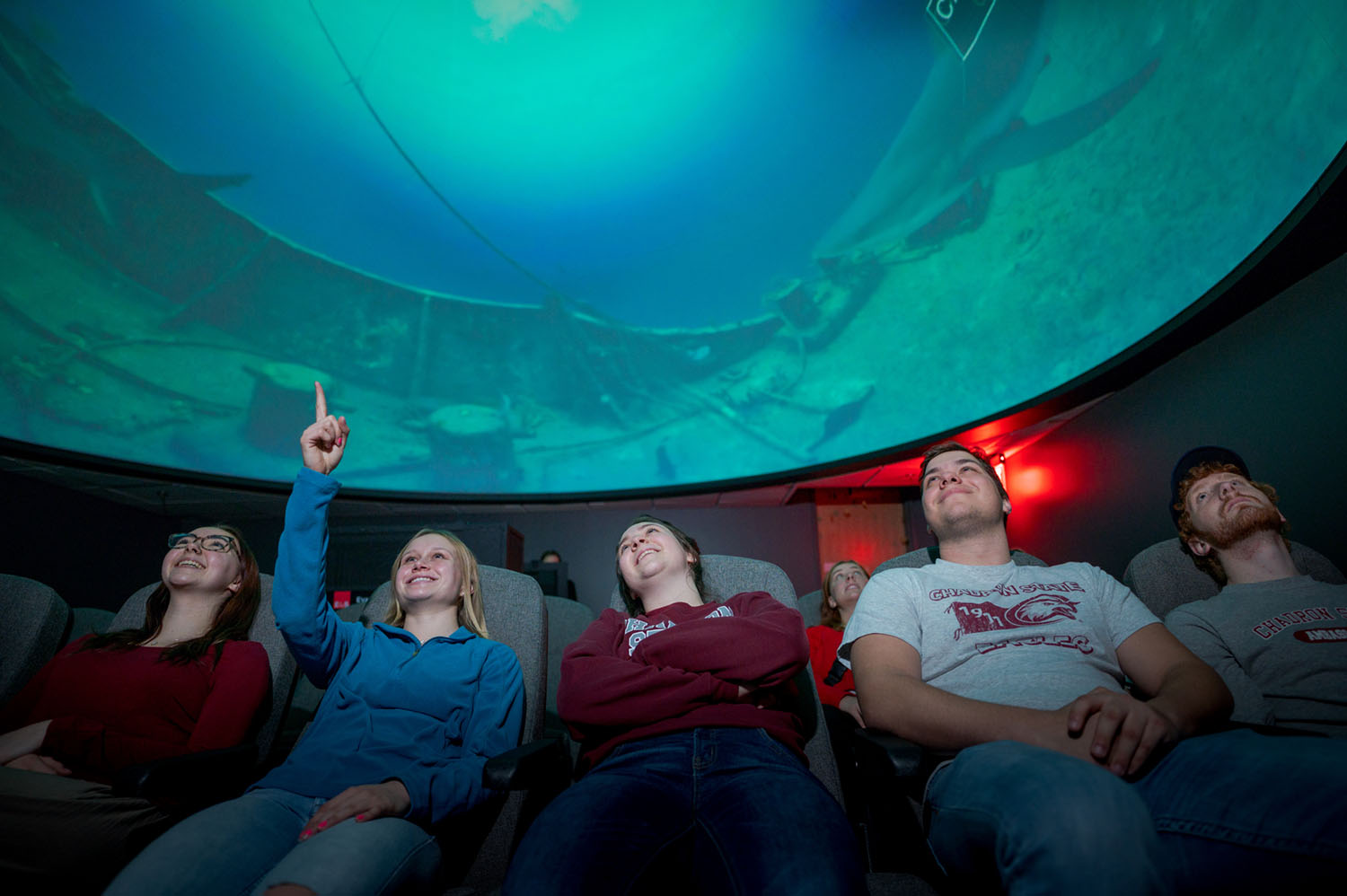The Dr. Lois Veath Planetarium is available for showings by reservation only (with the exception of Free Fridays). Operating dates are September 1st through December 1st, and February 1st through April 30th. The planetarium can service groups between 8-39 people. If your group is larger, we can provide multiple shows for your audience. We ask that reservations be made at least one week in advance. A full show includes a guided lecture tour of the Night Sky as well as a movie experience. Planetarium shows are separate from visits to the Eleanor Barbour Cook Museum. If you are interested in taking your group or class to visit the museum, please contact the Museum Curator, Dr. M’ Bark Baddouh, at mbaddouh@csc.edu.
Student Visits
The Dr. Lois Veath Planetarium offers astronomy programs for all grades and age groups from preschool through college level. Public, private, and homeschooling groups are welcome at no cost. Student visits are limited by the availability of our personnel to present them. Please review the Available Shows tab and select the day and time that best serves your needs and grade level. We ask that reservations be made at least one week in advance.
Free Fridays
Free Fridays are first come, first served shows that are open to the public. These events cannot be reserved. We try to cycle through the shows but as we are learning and growing our collection of shows, we ask for your patience. All shows will be appropriate for a general audience. The entire program will be between 30-45 minutes. When possible, we will include a narrated guide to the night sky prior to the movie. Shows are at 2:00 pm and 3:00 pm, the same show will be given at both viewings. See descriptions of each show on our Available Shows tab. Donations are always welcome. We hope you enjoy the shows!
Free Friday Schedule Fall 2025:
- September 12th
- September 26th
- October 10th
- October 24th
- November 7th
- November 21st
- December 5th
Additional Information
The CSC Department of Physical Sciences reserves the right to determine the content and scope of all presentations. Fees and donations are used to fund planetarium renovations and allow the development of new programs. Please do not bring any food or drinks into the planetarium. Hearing aids are available for those who would like to utilize them.
Special Closures
The planetarium will be closed during summer and winter break to allow our student workers to focus on their exams and enjoy their breaks with their families. We will also be closed on dates when Chadron State College is closed, or no classes are scheduled. Examples include fall break, midterm break, Thanksgiving, and government holidays.
For questions about the Dr. Lois Veath Planetarium, please email Kinsley Mason at kmason@csc.edu.








